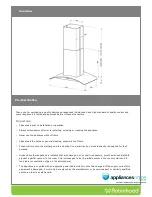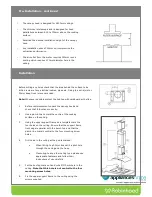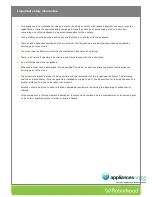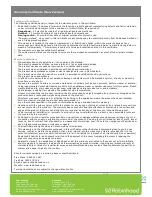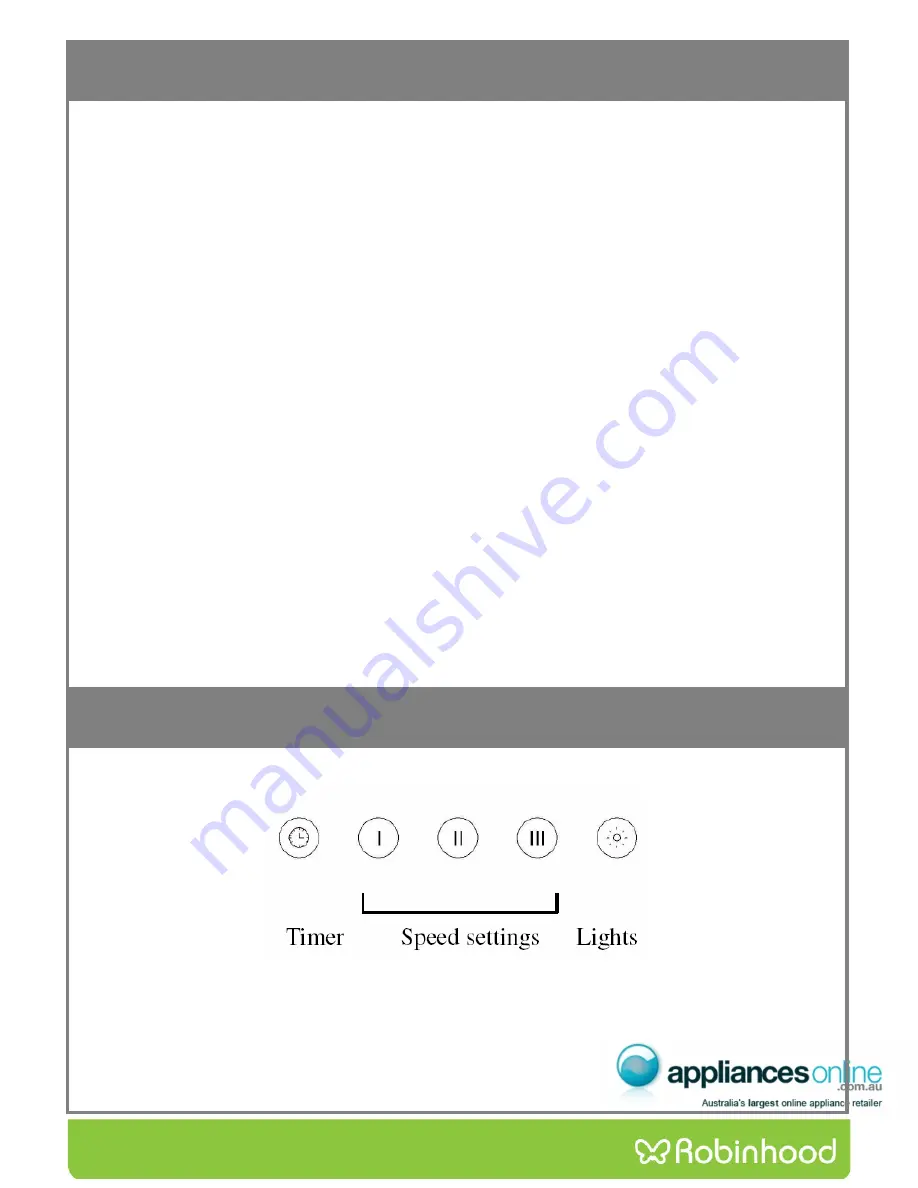
Installation
-
continued
7.
Secure ducting to the top of the motor housing, use duct tape if required. Solid ducting, galvanized or
plastic is recommended. Use flexi ducting only in difficult installations and if used ensure that it is pulled
tight. The smoother, straighter and shorter the ducting the quieter and more efficient the canopy hood
will perform. Tape the power plug to somewhere near the top of the ducting, this will enable easy
access to the plug after installation.
8.
Secure the lower part of the support frame to the top of the canopy hood using the screws provided.
9.
Strip the plastic protective film off the two chimney pieces and place these over the lower support
frame. The lower chimney will rest on top of the canopy hood and the upper chimney will be extended
and secured to the upper support frame. To ensure that the upper chimney does not slip inside the
lower chimney, secure it so that the upper chimney is showing. Duct tape or two screws/nails through
the upper chimney securing holes will do this.
10.
Offer the canopy hood, lower support frame, chimneys and ducting up to the upper support frame and
secure in place with the four screws provided. The dimension between the filters and the cooking
surface should be in line with those suggested in the ‘height of canopy hood’ section. An additional
person will be required for this operation or a simple support frame manufactured to the correct
dimensions will aid assembly of the island canopy hood.
o
Finish assembling the ducting ensuring the path is as short, straight and smooth as possible.
o
Connect to the power supply and switch on the power to the canopy hood.
o
Slide the upper chimney piece up to the ceiling and secure in place with the four screws supplied.
o
Remove the transport tape that holds the oil cup in place under the motor unit and fit the filters.
Operating Instructions
Timer switch:
Canopy hood will remain on a low, mid or high speed for 15 minutes to clear away all
residual cooking odours before switching off automatically.


